Transcription of State of the Cruise Industry - FCCA
1 State of the Cruise Industry2017 Another record was broken in 2017, with million global ocean Cruise passengers a percent increaseover 2016 s previous high of million. Coupled with an annual occupancy percentage again exceeding 100percent, this passenger growth shows sustained consumer interest in cruising and an Industry where demandcontinues to outpace supply. In fact, demand for cruising has increased percent in the last five years. Tosupport this demand, FCCA and CLIA member Cruise lines lines added nearly 22,000 lower berths through sixnew ocean-going vessels in 2017, while continuing to grow demand through innovative, exciting features anda more personalized guest experience complete with wearable, customizable onboard technologies, as well asmedia initiatives including even TV shows and movies to display what cruising offers. The Industry also continues to grow by becoming more global in both itineraries and passenger sourcing, butthe Caribbean again headlined the Industry s success.
2 It accounted for more than a third ( percent) of theglobal deployment capacity market share. Plus, the region s yields and ticket pricing continue to increase, aidedby a strong economy and consumer sentiment. 2018 This year is poised to reach new heights and break more records, with a forecast of million sailing theoceans on FCCA and CLIA member Cruise lines a 10 percent increase over 2016. Driven by nine new ocean-going vessels with 32,000 lower berths and an investment of $ billion launching in 2018, the record passen-gers will have the world as their gangway, with nearly 1,000 ports. They will also hail from around the world ,with growth in source markets like China. Today s ships offer a world of innovations that build Cruise lines brands from sky-diving simulators, bikingabove the ocean and robotic bartenders, to celebrity chef kitchens, butler service and all-suite staterooms andfacilities that accommodate family members of all generations traveling together or even passengers cruisingsolo.
3 Cruise ships facilities and services continue to exceed the expectations of a growing population of travel-ers, and cruisers can easily find a Cruise line, ship, stateroom and itinerary to suit even more options will soon be available, as FCCA and CLIA member Cruise lines have 50 vessels on orderbetween 2018-2025, representing 220,000 lower berths and an investment value of more than $51 billion. Andmost of these vessels are large in both features and capacity, with the average newbuild on order tipping thescales at more than 155,000 GRT with more than 4,000 lower Cruise Travel Trends for the Coming Year:1. All Budgets Will Cruise : The 2018 Cruise Travel Report found that while cruising does skew a bit more to the affluent consumer than other types of vacations, almost all levels of income enjoy Cruise Transformational Cruise Travel: The next evolution of experiential travel sees travelers taking a step further and seeking transformational experiences, from cultural immersion and voluntourism to extreme adventures.
4 3. Sustainability at Sea: In the coming year there with be an even greater focus on sustainable tourism, with travelers participating in practices from recycling to volontourism both on board and on land. 4. Millennials Focus on River and Small Ships: River and small ship cruising continues to gain traction among travelers, specifically the Millennial set, with a focus on the ever-expanding itineraries and destination experiences that reach far beyond walking and coach tours and endless options for the perfect Instagram moment. 5. Skip-Gen Cruising: Multigenerational cruising is projected to increase in popularity, and skip-generation trips, with grandparents and grandchildren traveling together without their parents, are predicted to be highly popular in 2018 and Travelers Warm to Chilly Destinations: The coming year is projected to see an increase in popularity of colder climate Healthy Doses: Travelers are seeking health and wellness trips more than ever before, and the Cruise Industry is responding with services and experiences including onboard health wellness seminars led by popular health experts, custom fitness programs, stress management, spa services and even entire Cruise itineraries dedicated to weight management and healthy living.
5 8. Smart Travel Technology: The coming year there will be a rise in traveler-friendly onboard technologies. Several Cruise lines are introducing wearable technology for Cruise guests that provide a personalized and seamless experience while onboard. Global Ocean Cruise Passengers (Millions) Cruise Industry Overview In 2017, a record million passengers cruised globally. An estimated million will Cruise globally in 2018. $126 billion in total economic impact and 1 million jobs paying $41 billion in wages and salaries were generated by the global Cruise Industry in 2016. Demand for cruising increased in the last five years. The Cruise Industry is the fastest-growing category in the leisure travel market . From a capacity standpoint, utilization is consistently over 100%. Eight out of 10 CLIA-certified travel agents expect increased Cruise sales in 2018.
6 Throughout its history, the Cruise Industry has responded to vacation desires of its guests and embraced innovation to develop new destinations, new ship designs, new and diverse onboard amenities, facilities and services, plus wide-ranging shore side activities. Cruise lines have also offered their guests new Cruise themes and voyage lengths to meet the changing vacation patternsof today s travelers. The Cruise ship order book from 2018-2025 includes 50 new ocean-going vessels from FCCA/CLIA member Cruise lines, representing 220,000 lower berths and an investment value of $51 : Data provided by CLIA. 2018 forecast based upon historical relationshipbetween yearly capacity increase and yearly passenger increase. New vessels and capacity deployment as identified throughDecember 2017. New ship announcements, vessel retirements and quarterly passenger reporting will affect these Industry s Economic Impact to Caribbean and Latin American DestinationsHighlights of the Business Research & Economic Advisors (BREA) 2015 study Economic Contribution ofCruise Tourism to the Destination Economies* include: Cruise tourism contributed $ billion of direct expenditures in the participating 35 destinations^ for the 2014-2015 Cruise year.
7 Cruise -related expenditures generated 75,050 jobs, which paid $ million in wage income to residents. million passengers and million crew disembarked Cruise ships and visited the participating destinations during the 2014-2015 Cruise year, spending $ billion and $ million, respectively. Average expenditure per passenger across all destinations was $ , and average expenditure per crewmember was $ The highest expenditure per passenger was $ in St. Maarten, and the highest expenditure per crewmember was $ in Puerto Rico. Cruise line expenditures including port fees and taxes, payments to local tour operators and payments to local businesses for supplies and services contributed $ million. Cruise passengers spent an average of hours ashore during their Cruise call. It is clear that the Cruise Industry s economic impact in the Caribbean and Latin American is significant andcontinues to grow.
8 The Member Lines of the FCCA urge you to carefully analyze all of the study s informa-tion and see how the Cruise Industry positively impacts your destination s economy. ^Participants included: Antigua Aruba; The Bahamas; Barbados; Belize; Bonaire; British Virgin Islands; Cabo San Lucas,Mexico; Cayman Islands; Colombia; Costa Maya, Mexico; Costa Rica; Cozumel, Mexico; Curacao; Dominica; Dominican Republic;Ensenada, Mexico; Grenada; Guadeloupe; Guatemala; Honduras; Jamaica; Martinique; Mazatlan, Mexico; Nicaragua; Progreso,Mexico; Puerto Rico; Puerto Vallarta, Mexico; St. Kitts St. Lucia; St. Maarten; Tobago; Trinidad; Turks and Islands*This study is coordinated between the FCCA and BREA every three years, and participation is available forany interested destination in the Caribbean or Latin America. This study and past versions can be down-loaded at The new study will be released at the 2018 FCCA CruiseConference & Trade Cruises and Why?
9 Findings from CLIA s 2017 Cruise Travel Report People who Cruise are loyal to cruising, with 92 percent of cruisers saying they will probably or definitively book a Cruise as a next vacation, and 65 percent of cruisers rating cruises as the best type of vacation, over land-based vacations, all-inclusive resorts, tours, vacation house rentals or camping. Cruises are a preferred vacation choice for families, especially those with children under 18, and children are involved with the decision process for cruises more than they are for land-based vacations. Younger generations including Millennials and Generation X are embracing Cruise travel. Two-thirds of Gen Y/Millennials say that cruising is their favorite vacation, and this preference is even more pronounced among Gen Xers, with 71 percent. People who take cruises are younger and more diverse than non-cruisers, and different cruisers often have different priorities:oBaby Boomers are influenced more by trips, ports and destinations, along with itineraries and sight-seeing options.
10 OTraditionalists are interested in programs for children and Y and Millennials are more concerned with cost, convenience and onboard entertainment. A main benefit of cruises vs. land-based vacations is the opportunity to see and do new things. The vast majority of cruisers see cruising as a good way to sample destinations for later trips. Millennials and Gen Xers, in particular, like this benefit to cruising and are more likely to have done pre-/post- Cruise stays in a port city and/or returned to a visited destination first experienced on a Cruise . Sixty-eight percent of cruisers identified the destination of their vacation as the most important factor influencing their vacation choice. Even though they also take land-based vacations, the average cruiser has already taken more than five cruises as an adult.
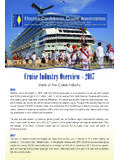
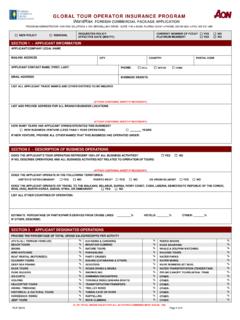
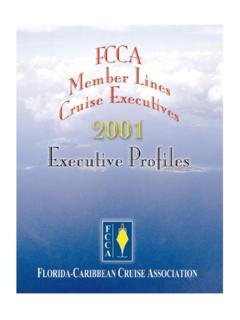
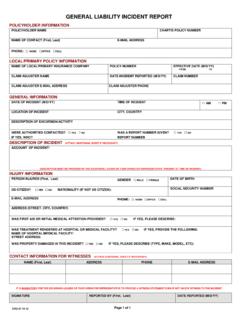
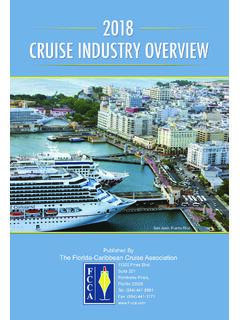
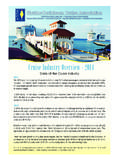
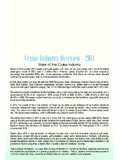

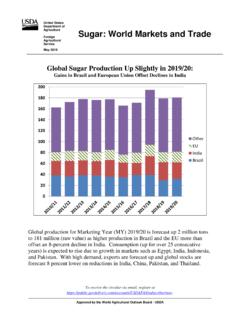
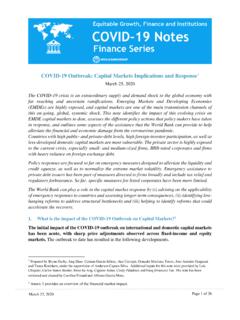

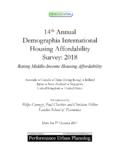

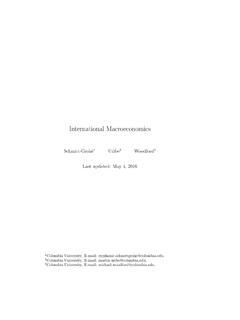

![)RUHLJQ $JULFXOWXUDO 6HUYLFH K ] o W t } o D l v d](/cache/preview/f/c/e/2/4/e/b/1/thumb-fce24eb1d5497a06f44eba8975ddfd0b.jpg)